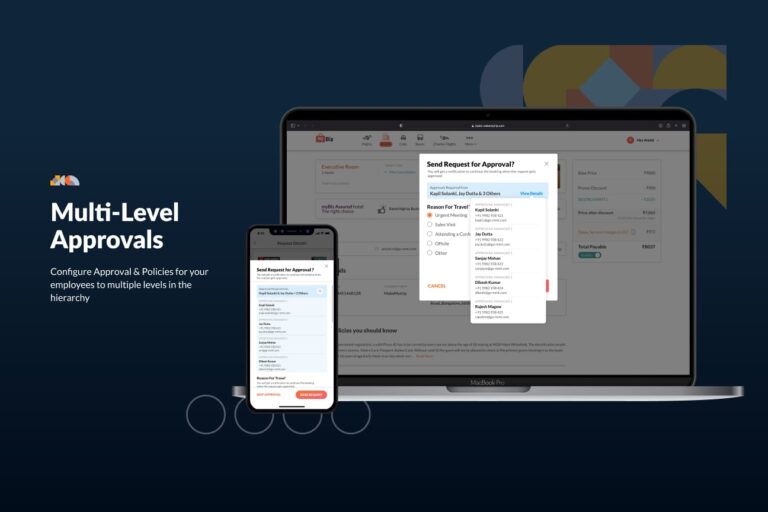
Did you know that team productivity relies heavily on how effectively new members are integrated into an organization? For sales, it means more than just giving the newcomer the fundamentals of a business but assuring him of having the right tools and the necessary insight, which can make them successful from the get-go. An efficient onboarding process can dramatically improve productivity, shorten ramp-up times, and set the stage for long-term success.
In this article, we shall discuss designing an effective sales onboarding system that really maximizes the productivity of the team by focusing on the benefits of digital tools to produce better outcomes.
Use of Digital Tools
Digital tools bring new solutions to the question of how to improve the sales onboarding process as the business environment becomes highly fast-paced and saturated. They bring streamlined training and monitor the progress of new hires, allowing for consistency in the overall process. Implementing a tool correctly can save time and resources and yet provide a better experience while onboarding new hires.
Digital onboarding tools track the movement of new hires, in such a way that no employee is provided with a quality better than others. This reduces onboarding time by an extent but also makes it easy to track areas that require more support or clarity.
For example, there is Sparkle which offers many features to help companies with the onboarding process. This allows companies to create personalized, customized onboarding experiences using digital channels and keeping specific sales strategies and goals in mind.
Key Features of an Effective Onboarding Solution
A good onboarding program should contain core elements designed to provide new employees with adequate preparation for effectiveness. Digital tools or not, the next key components come into play:
1. Structured Training Programs
Proper education is one of the fundamental inputs of an onboarding system. New entrants require clear material in order to understand policies, sales techniques, and customer interaction strategies. A structured training system will ensure that new hires can quickly know what they are doing and where they need to be.
2. Continuous Support and Mentorship
Onboarding doesn’t end when training does; there should be continuous support for employees to grow and develop. Formally or informally, formal mentorship programs can be established to help build a feeling of belonging and keep new hires motivated.
3. Feedback Mechanisms
Feedback is important for new employees and for the organization. For a company, collecting information regularly from its employees about their onboarding experience can help them keep on developing the process and fill any gaps. This way, the process of onboarding is always dynamic and responsive to the needs of the changing team.
The Importance of Good Communication
Effective communication is integral during the onboarding process as it ensures that new hires take their position, expectations, and how they contribute to the success of a team seriously. Miscommunication or lack of clarity may lead to confusion and delays, which impacts productivity generally.
Setting Expectations Early
The first step in any effective onboarding process is to ensure that there are Clear, Measurable Expectations. New hires ought to know what success looks like within their role, and this needs to be communicated from day one. Whether it’s digital or one-on-one, it helps keep them focused and aligned with what the company is trying to do.
Continuous Communication and Feedback
It is also important to communicate continuously with the new hires. The managers should check in regularly so questions may be clarified or worries let loose, leaving them to support the employee. Tools such as real-time messaging platforms or email communication may help in opening channels between new hires and their teams.
Benefits of an Efficient Onboarding Process
Here are a few key benefits of having an efficient onboarding process:
1. Less Time for Attaining Full Productivity
Onboarding systems take any new hire to full productivity quickly by providing structured, comprehensive training. Therefore, the sales team will hit their number faster and with much less trial and error.
2. Uniformity Across Teams
What an onboarding system helps to streamline is to have every new hire get the same treatment based on department and location. This makes it easy for a cohesive team to develop and discrepancies in understanding are eradicated.
3. Better Retention of Employees
If the employee is nurtured and assured of his or her responsibilities at the early stages, he or she will probably stay for an even longer period in the organization. Good onboarding forms the basis of job satisfaction and retention.
4. Higher Engagement
A structured onboarding process keeps employees engaged and motivated. The new recruits gain confidence at their workplaces and thus perform well from the start.
Addressing Onboarding Challenges
Even with a strong system, onboarding is never a piece of cake. Here are some common problems companies face together with how to get around them:
Challenge: Too Much Information
It’s very easy to be too overwhelming and appear like you’re trying to teach too much at once, which leads to immense confusion and frustration for the new hire. Instead, break training up into manageable modules so they have time to absorb what they’re learning.
Challenge: Disengagement
Although some employees will never have the ability to connect with the onboarding process, interactive lessons with items like quizzes, videos, and applicable real-life examples make learning much more exciting.
Challenge: Monitoring Progress
Tracking the development of new hires during onboarding helps to establish whether or not they are performing according to expectations. Real-time data on completion rates and performance is possible using digital tools.
It has to be quite frequently checked to what extent the onboarding process is successful. Here are some of the most important KPIs to monitor:
• Time to Full Productivity: How many days do newly hired employees take in order to reach their sales target?
• Employee Retention: Are new hires prone to staying in the company for a long time?
• Feedback Scores: What do new hires say about your onboarding process?
• Sales Performance: How are the new hires performing against their sales targets after finishing the onboarding process?
Track these metrics so that you might adjust and perfect your onboarding in a way that is at its most efficient and effective in the long run.
FAQs
1. Why is an efficient sales onboarding process important for productivity?
An efficient onboarding process equips new hires with the tools, knowledge, and confidence they need to succeed quickly, reducing the time it takes for them to become fully productive members of the sales team.
2. How can digital tools improve the sales onboarding process?
Digital tools help streamline onboarding by providing structured training, real-time progress tracking, and personalized learning paths, making it easier to scale and monitor the onboarding experience.
3. What are some key metrics to measure onboarding success?
Key metrics include time to full productivity, employee retention rates, feedback from new hires, and overall sales performance post-onboarding. These indicators help assess how effective the process is.
Conclusion
Unlocking team productivity begins with an effective sales onboarding system. By establishing structured training, ongoing support, and clear communication, businesses can set their sales teams up for success right from day one. An effective onboarding system does not only benefit the newcomers but rather builds up the entire strength of the team with increased productivity and long-term outputs.
Write and Win: Participate in Creative writing Contest & International Essay Contest and win fabulous prizes.


